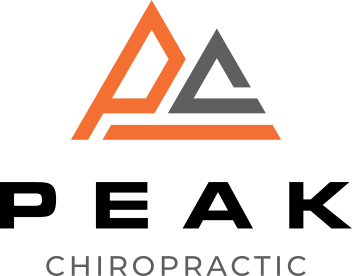When it comes to managing pain, you might be surprised at how many natural methods can offer relief without relying on medication. From herbal remedies to dietary adjustments, there are effective strategies worth considering. You can also explore mindfulness techniques and even acupuncture for targeted treatment. Each approach has its own benefits, and finding the right combination could notably improve your comfort. But which methods resonate most with you, and how can they be integrated into your daily routine?
Herbal Remedies
When it comes to finding relief from pain, herbal remedies often offer a natural alternative to over-the-counter medications. You might be surprised to learn that many common herbs have been used for centuries to alleviate various types of discomfort.
For instance, ginger is renowned for its anti-inflammatory properties, making it effective for joint pain and muscle soreness. You can easily incorporate ginger into your diet by brewing it as tea or adding it to your meals.
Turmeric is another powerful option. Its active compound, curcumin, has been shown to reduce pain and inflammation. You can take turmeric in supplement form or sprinkle it into your dishes.
If you suffer from headaches or migraines, consider trying peppermint oil. Applying diluted peppermint oil to your temples can help calm tension and alleviate pain.
Willow bark is another herbal remedy worth considering. It's been used for centuries as a natural alternative to aspirin for pain relief. You can find willow bark in teas or capsules.
Don't forget about chamomile, known for its calming effects. Drinking chamomile tea can help soothe discomfort and promote relaxation.
Always remember to consult with a healthcare professional before starting any new herbal regimen, especially if you're taking other medications. Herbal remedies can interact with certain drugs, so it's essential to guarantee you're making safe choices.
With a little research and caution, you can explore these natural options to find the relief you seek.
Physical Activity
Herbal remedies provide one avenue for pain relief, but incorporating physical activity into your routine can also greatly help manage discomfort. Engaging in regular exercise boosts your body's production of endorphins, which act as natural painkillers. Even a brisk walk or gentle stretching can reduce tension and improve circulation, aiding in pain relief.
You don't need to commit to intense workouts to reap the benefits. Simple activities like yoga, swimming, or cycling can alleviate pain while enhancing flexibility and strength. Start by setting small, achievable goals. Aim for at least 30 minutes of moderate activity most days of the week. This consistent practice can help you build endurance and resilience against pain.
Listen to your body as you move. If something feels uncomfortable or exacerbates your pain, adjust the intensity or try a different activity. Low-impact exercises, like tai chi or water aerobics, can be particularly effective since they minimize strain on your joints while still promoting movement.
Incorporating physical activity into your daily life not only helps with pain relief but also improves your mood and overall well-being.
Don't forget to take breaks and mix in rest days to allow your body to recover. Staying active is a powerful tool in your pain management arsenal. So, lace up those sneakers and get moving—your body will thank you!
Mindfulness and Meditation
Incorporating mindfulness and meditation into your pain management routine can be incredibly beneficial. These practices help you focus on the present moment, which can reduce your perception of pain. When you meditate, you train your mind to acknowledge discomfort without letting it dominate your thoughts. This shift in perspective can empower you to manage pain more effectively.
Start by finding a quiet space where you can sit comfortably. Close your eyes and take deep breaths, allowing your body to relax. As you breathe in and out, notice any sensations in your body. Instead of resisting pain, try to observe it. Acknowledge its presence, but don't let it define your experience. This practice can help you detach from the emotional response often tied to pain.
You can also explore guided meditations specifically designed for pain relief. Many apps and online resources offer sessions that can lead you through visualization techniques or body scans, helping you cultivate a deeper sense of relaxation. Regular practice can enhance your ability to cope with pain and improve your overall well-being.
Mindfulness doesn't just apply to formal meditation sessions. You can incorporate it into daily activities, such as eating or walking. By being fully present in these moments, you can cultivate a sense of calm and reduce stress, which may further alleviate pain.
Ultimately, mindfulness and meditation are powerful tools that can enhance your pain relief journey, helping you regain a sense of control over your body and mind.
Heat and Cold Therapy
Heat and cold therapy are effective methods for managing pain and reducing inflammation. You can easily incorporate these techniques into your daily routine to find relief from various aches and discomforts.
When using heat therapy, consider applying a warm compress or heating pad to the affected area. This can help relax tight muscles and improve blood circulation, which promotes healing. If you're dealing with chronic pain, soaking in a warm bath can be particularly soothing.
Just remember to avoid excessive heat, as it can lead to burns or skin irritation. Ideally, you should apply heat for about 15-20 minutes at a time.
On the other hand, cold therapy is great for reducing swelling and numbing sharp pain. You can use ice packs or a bag of frozen vegetables wrapped in a towel.
Applying cold to an injury or inflamed area for 15-20 minutes can minimize swelling and dull the pain. It's especially effective right after an injury occurs.
Just be cautious not to apply ice directly to your skin; always use a barrier to prevent frostbite.
You might find it helpful to alternate between heat and cold therapy. Start with cold to reduce inflammation, then switch to heat to relax the muscles.
Each method has its advantages, so experimenting can help you discover what works best for your pain relief needs. With a little practice, these simple therapies can become valuable tools in your natural pain management toolkit.
Acupuncture and Acupressure
Acupuncture and acupressure offer unique benefits for pain relief that you might find effective.
Understanding the techniques involved can help you choose the right practitioner to guide you through the process.
Let's explore how these methods can enhance your natural pain management strategies.
Benefits of Acupuncture
Many people find acupuncture to be an effective way to alleviate pain and promote overall well-being. This ancient practice involves inserting thin needles into specific points on your body, stimulating your body's natural healing processes.
You might be surprised to learn that acupuncture can help with various types of pain, including headaches, back pain, and joint pain.
One of the key benefits of acupuncture is its ability to reduce inflammation. By targeting specific acupoints, it encourages blood flow and helps your body respond better to pain.
Many individuals also report improved sleep quality after acupuncture sessions, as it can help reduce stress and anxiety levels.
Additionally, acupuncture can enhance your overall energy levels. By balancing your body's energy flow, you may feel more energized and less fatigued.
It's a holistic approach that considers both physical and emotional factors, making it a well-rounded option for those seeking pain relief.
Understanding Acupressure Techniques
When exploring natural pain relief, understanding acupressure techniques offers a valuable alternative to acupuncture. Acupressure involves applying pressure to specific points on the body, known as acupoints, to alleviate pain and promote healing. You can easily practice this technique yourself, making it a convenient option for immediate relief.
To begin, locate the acupoints that correspond to your pain. For headaches, try pressing the space between your thumb and index finger, known as the Hegu point. For back pain, find the point just below the base of your skull and apply firm pressure. Use your fingers, knuckles, or a small massage tool to apply steady pressure, lasting 30 seconds to a few minutes.
Breathe deeply while you're pressing the acupoints; this helps enhance the relaxation response. You'll notice that acupressure isn't just about pain relief; it can also reduce stress and improve your overall well-being.
Remember to listen to your body—if you experience any discomfort, ease off the pressure. With practice, you'll discover which points work best for you and can incorporate acupressure into your daily routine for lasting benefits.
Choosing the Right Practitioner
Finding the right practitioner for acupuncture or acupressure can make a significant difference in your experience and results. Start by researching qualified professionals in your area. Look for practitioners who are licensed and certified, as this indicates they've met the necessary training requirements.
Next, check their experience. Ask how long they've been practicing and if they specialize in conditions similar to yours. A practitioner who's dealt with your specific issue will likely provide better results.
Don't hesitate to read reviews or seek recommendations from friends or healthcare providers. Personal experiences can give you insights into a practitioner's approach and effectiveness.
During your initial consultation, pay attention to how comfortable you feel. A good practitioner should listen to your concerns, answer your questions, and create a plan tailored to your needs. Trust your instincts—if something feels off, it's okay to keep looking.
Finally, consider the atmosphere of the clinic. A clean, welcoming environment can enhance your overall experience.
Dietary Adjustments
Making dietary adjustments can greatly impact your pain levels and overall health. By paying attention to what you eat, you can reduce inflammation, boost your immune system, and even enhance your body's natural healing processes.
Here are some dietary changes you might consider:
- Increase Omega-3 Fatty Acids: Foods like salmon, walnuts, and chia seeds are rich in omega-3s, which can help reduce inflammation and alleviate pain. Try to incorporate these into your meals several times a week.
- Fruits and Vegetables: Aim for a rainbow of produce. Berries, leafy greens, and cruciferous vegetables like broccoli are packed with antioxidants that combat inflammation. Make it a habit to fill half your plate with fruits and veggies at every meal.
- Limit Processed Foods: Cut back on sugar, refined carbs, and trans fats. These can increase inflammation and worsen pain. Focus on whole, unprocessed foods to help your body recover.
- Stay Hydrated: Dehydration can lead to increased pain sensitivity. Drink plenty of water throughout the day. Herbal teas can also be a soothing alternative and provide additional health benefits.
Essential Oils
Essential oils offer a natural and effective way to manage pain, providing both physical relief and emotional comfort. You can easily incorporate them into your daily routine to help alleviate discomfort from various conditions, such as headaches, muscle soreness, or chronic pain.
To get started, choose essential oils known for their pain-relieving properties. Lavender oil is renowned for its calming effects and can help reduce tension headaches. Peppermint oil contains menthol, which can provide a cooling sensation and relieve muscle pain when applied topically. Eucalyptus oil is another great option, known for its anti-inflammatory properties, making it effective for joint pain.
You can use essential oils in several ways. For topical application, dilute a few drops with a carrier oil, like coconut or olive oil, and apply it to the affected area. Always perform a patch test first to verify you don't have an adverse reaction.
Alternatively, you can use a diffuser to inhale the calming scents, which can also help reduce anxiety and stress related to pain.
Another method is to add essential oils to your bath. Just a few drops mixed with Epsom salts can create a soothing soak that relaxes both your body and mind.
Conclusion
Incorporating these natural pain relief methods can markedly improve your quality of life. By using herbal remedies, staying active, and practicing mindfulness, you can manage pain more effectively. Don't forget to experiment with heat and cold therapies, and consider acupuncture for targeted relief. Adjusting your diet and using essential oils can also make a big difference. By taking these steps, you can empower yourself to find relief and enhance your overall well-being.



